Ready to Get Started
At Provance, we go out of our way to bring you great service. That’s in our digital DNA. Your IT success is our success.
Ticket escalation is an essential ITIL process, ensuring that tickets receive the attention they need, are resolved within an acceptable timeframe, and with minimal impact to the business or its customers.
ITIL® and ServiceTeam ITSM work with two types of escalations;
The two types of escalation are used for different purposes and it is important to understand these differences to properly handle ticket fulfillment and resolution.
A functional escalation is used when a ticket transfers ownership to a team or person who is more suited to resolve or fulfill it.
In ServiceTeam ITSM, functional escalations of a ticket are easy Simply assign the ticket to the correct user or team.
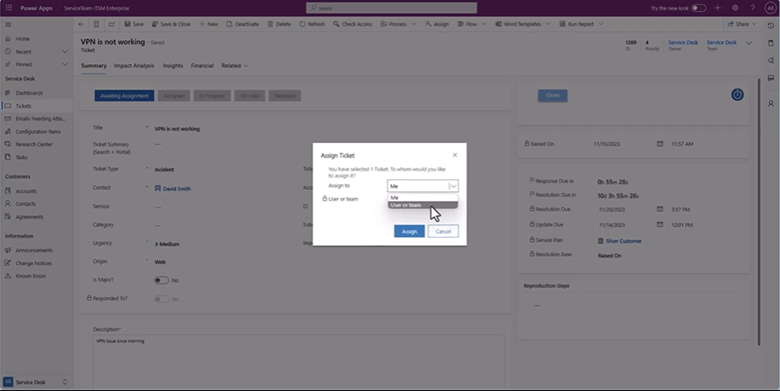
A hierarchical escalation is used when an increase in urgency or managerial oversight is needed. A hierarchical escalation will always increase the “Escalation Level” on the ticket and may optionally include assigning it to another team or user.
Hierarchical escalations can be performed manually anytime but can also be scheduled to happen automatically based on the Service Level Agreement settings.
Note that the main purpose for a hierarchical escalation is to increase the tickets visibility to management. The ticket can therefore stay assigned to the same user but can keep increasing in escalations. Automated email notifications can happen on escalations to keep the proper parties notified.
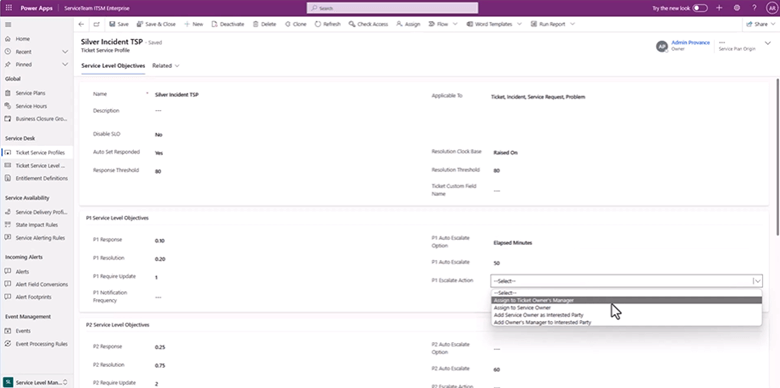
A ticket is created by a support agent. It is assigned (functionally escalated) to the network team. From there, it is assigned to a network engineer who resolves the issue.
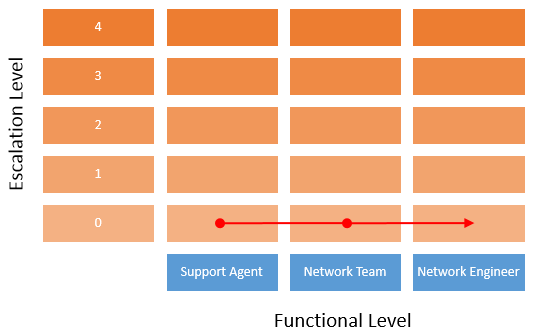
All steps are completed on time and there are no issues along the way that warrants a hierarchical escalation and bring in management oversight.
A support agent creates a new incident and assigns it (functional escalation) to the network team. The network team is unable to properly assign it to the correct person and a number of hierarchical escalations happen to bring in management oversight and move the process forward.
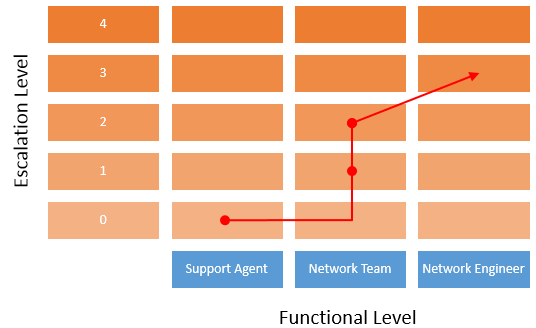
In this case, the incident was both functionally and hierarchically escalated.
With escalations in ServiceTeam ITSM, the functional and hierarchical escalations can happen at the same time as seen in the last step above. This provides flexibility for users and managers so they can quickly assign an item to the correct team or individual and increase its visibility for management at the same time. In the case above, the incident had spent too much time in the network team’s queue without being assigned to an individual to take responsibility. A manager then escalated it to ensure prompt resolution, at the same time as assigning the incident to the most suited individual.
A support agent creates a new incident, for a seemingly simple issue. Due to coming close to the SLA Due Date and Time, a hierarchical escalation happens automatically. The customer also complains, and a manager manually performs a hierarchical escalation on the ticket.
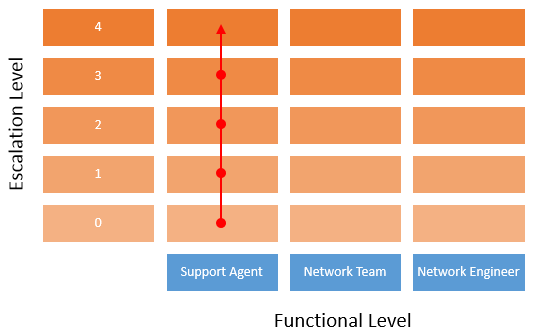
In this case, it is a simple incident, which stays with the support agent for resolution, but the incident goes through multiple hierarchical escalations, bringing in management oversight to ensure completion and customer satisfaction. Meanwhile, the incident never leaves the support agent or the service desk level as this functional level where the incident needs to be resolved.
As mentioned in the beginning, proper control of escalations, whether they are functional or hierarchical, are important to meeting agreed service levels. Monitoring and reporting on ticket escalations can also help you improve support over the long term.
To learn more about ServiceTeam ITSM capabilities, watch an overview webcast with special guest, the City of London and the City of London Police.
At Provance, we go out of our way to bring you great service. That’s in our digital DNA. Your IT success is our success.